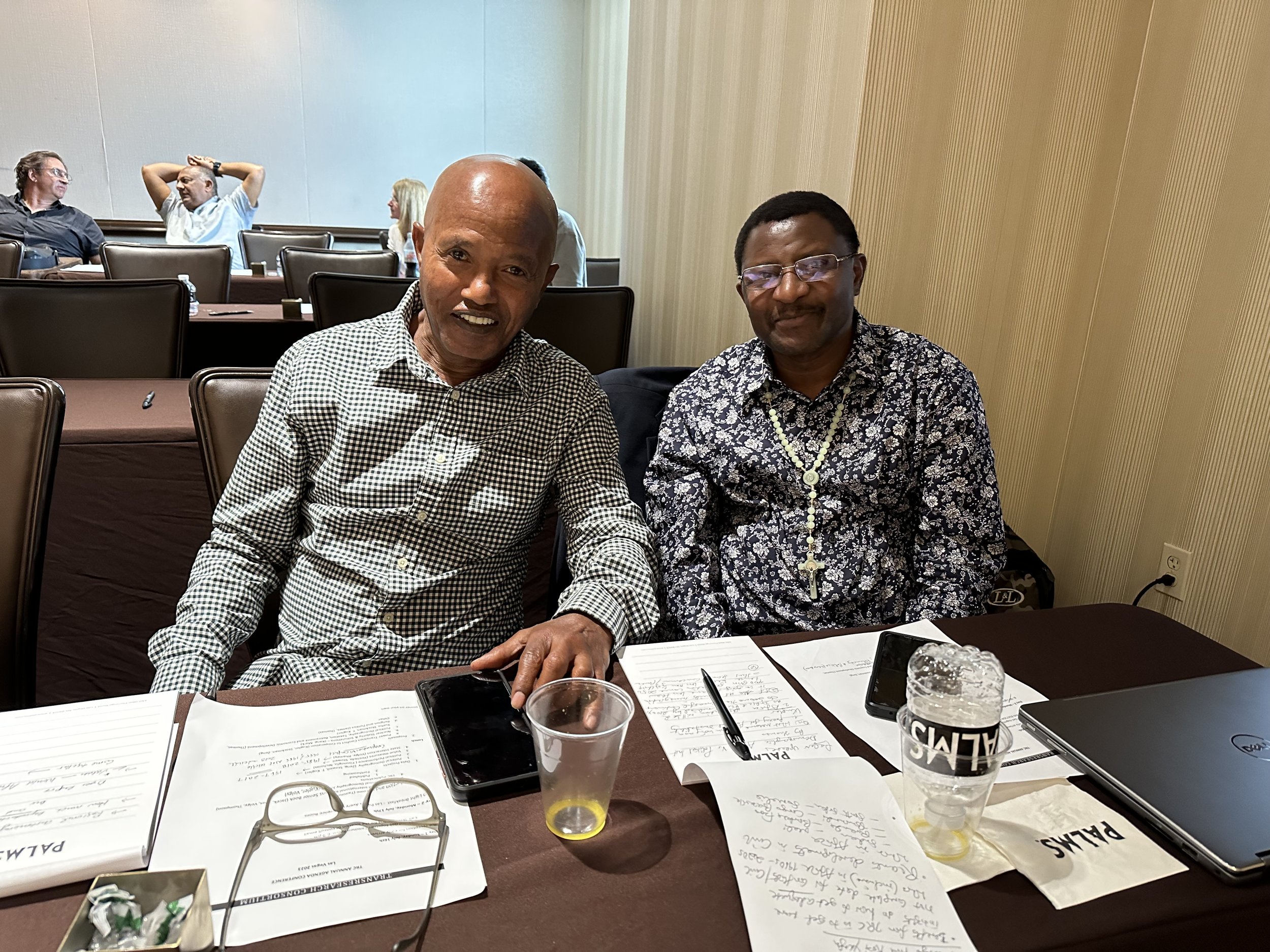
TransResearch Consortium
The TransResearch Consortium (TRC) is a registered 501(c)(3) nonprofit research institution. Its mission is to encourage in-depth research that leads to new ideas for solving problems facing society at the local, national and global levels. Focusing especially on impending global transitions driven by power relations and demographic shifts, this research seeks to identify roadblocks to global and regional cooperation and opportunities for investment, trade, and reciprocal relationships.
The TRC does not undertake lobbying efforts, back political candidates, or engage in direct political activities.
The TRC is not associated with any political organization or party—Republican, Democrat, Green, Libertarian, or other.
The TRC functions as a think tank, dedicated to increasing and enhancing understanding of the impact of policies and social and institutional dynamics on the global future.
The TRC is a collaborative venture of Claremont Graduate University, Portland State University, and La Sierra University.
Latest Blog Posts
A World of Giants
Exploring the intersection of Indian, Chinese and US interests in the
21st Century
The history of the 21st Century will be written at the intersection of the national interests of the leading and emerging powers. While the United States is the preeminent global power today, by mid-Century the emergence of China and India will rearrange the global landscape. As with tectonic plate shifts, there will be early warning signs, tremors, which forecast the more massive shifts of the future. Although this phenomenon has been recognized, belatedly, in Washington, D.C., New Delhi, and Beijing, there has been a noticeable absence of any strategic planning to deal with problems that will arise concurrently with such large shifts in power. Since the issues of mid Century will be created or constrained by the policies of today, the world cannot afford to wait for the normal unfolding of events.
A report from the U.S. National Intelligence Council (NIC) likens the rapid rise of China and India in the global scene as being much like the “advent of a united Germany in the 19th century and a powerful United States in the early 20th century.” The NIC predicts this rise will usher in a new era in which the two “will transform the geopolitical landscape, with impacts potentially as dramatic as those in the previous two centuries.” As basis for this judgment, the NIC cites high economic growth, expanding military capabilities, and large populations as fundamental indicators contributing to the rise in “economic and political power” of these Asian giants.
We predicted this outcome in a book published in 2000, Power Transitions in the 21st Century. Since then, China has overtaken the US in terms of GDP, and India’s economy will become the third largest in the world in 30 years. This economic transformation will create a “mixture of awe, opportunism, and trepidation.” When one considers that the combined populations of India and China make up nearly one-third of the global population, and that their respective economies have experienced average growth rates of 9.5% and 6% over the past twenty years, it is easy to grasp the tidal wave of change that is being generated in Asia.
Already China is a global leader in mass manufacturing and annually attracts the lion’s share of global foreign direct investment. India, on the other hand, leads the world in design, software, services, and precision industry, while lagging for now in attracting foreign direct investment.
World leaders are just now appreciating these global trends. But since these trends culminate in a distant future, leaders continue to focus on the immediate and more demanding. The risk of inattention and the lack of policies implemented today for impact tomorrow represents a staggering failure of vision. Sustainable policies that integrate the interests of the US, China, India and the EU must be put into place soon or the global community will face the consequences of giants at odds with each other rather than sharing the mantle of leadership under an umbrella of common preferences.
Mission
The TransResearch Consortium is a non-profit research alliance whose mission is to encourage in-depth research that leads to new ideas for solving problems facing society at the local, national and global levels.
A Cutting Edge Concept
Business applications flow from the research agenda of the Consortium
The Consortium brings together the intellectual assets that reside within key universities in the United States, India, China, and the EU. In turn, these institutions reach out to their governments and policy makers with policy options and advice that meets the mission of the Consortium. While fleeting attempts have been made in the US to look at the emerging nation phenomena, few have engaged Universities and intellectual leaders in those target countries. Within the United States, there are many universities with Chinese programs, only a few with programs dealing with India, and virtually none that link the three and attempt to integrate both academic research and policy relevant papers into a coherent analysis dealing with what will happen when all three countries and the EU are more equal in power and influence than today.
Three academic entities in the United States, each with distinct capabilities, have developed this concept: the Mark O. Hatfield School of Government at Portland State University, which specializes in policy issues and publications; the School of Politics and Economics at Claremont Graduate University, which specializes in advanced quantitative and theoretical work on the US-China-India issue; and the Business School at La Sierra University in California with its in-depth expertise of the business communities in all three countries.
All Consortium partners conduct fund-raising activities for the Consortium. The purpose of these activities flows from the recognition that the research encouraged by the Consortium must serve its global mission. The Consortium holds an international conference annually. Interested parties are welcome to inquire for more details.
Political Capacity
The key to our approach is efficient extraction from a mobilized population and
effective implementation of public allocations
We know so much about the role of governments and yet we have so few tools for analyzing their effectiveness, their performance in the near term and over time. No issue could be more important in the policy world. Understanding the linkages between government performance and violence, stability, economic growth, and demographic changes, would not only help rationalize policy choices but assist governments and nongovernmental organizations in the search for the magic formula bridging development and stability.
We define political performance as the ability of governments to reach their population, to extract economic resources from that population and to allocate those resources to secure the long term survival of the political structure.
The key to our approach is efficient extraction from a mobilized population and effective implementation of public allocations. Governments that advocate policies that fail to meet goals will not meet the expectations generated. Failing governments may succeed in the short term through coercion, but will be challenged or replaced in the long run. Governments that perform effectively will be sustained over time.
We have measured the political performance of over 100 nations, in the process creating a new way to calculate the efficiency, the effectiveness of nations. We call this The Performance of Nations as explained in the book of the same name published by Rowman & Littlefield in 2012.
All types of governments extract revenues and mobilize their populations to support their goals. Thus they can be compared to each other. They also take some portion of the extracted resources and reallocate them for transportation, environment, infrastructure, national defense, police, and welfare programs, among other priorities. Following this path of inputs and outputs, we can evaluate the performance of governments – those that squander public resources are ineffective and will in the long run be replaced; those that utilize public revenues to advance national growth are retained and rewarded by internal stability.
Contributors
board of Trustees
Board of advisors
SEnior fellows
FELLOWS
Publications
The rise of regions: conflict and cooperation
edited by ronald l. tammen and Jacek Kugler
This timely book presents fresh, forward-looking analyses of key regions across the globe, organized around power transition theory. Tracking political and economic trajectories broadly, the contributors use cutting-edge data to forecast general trends in regional politics, economics, and diplomacy. Their collective insights into the likely directions of regional dynamics within a changing global order comprise an invaluable guidebook for forward-thinking readers considering where the world is headed in the coming decades and the implications for strategy, politics, and policy.
The performance of nations
edited by ronald l. tammen and Jacek Kugler
What is the economic cost of politics?
TRC's first book measures government performance in business, politics, and economics.
"The Performance of Nations," provides new and innovative insights into governmental political performance that can help key decision makers determine the economic, business and political growth potential of a nation, state, province, or municipality while shedding a broader light on reasons for past governmental failures.
The authors of "Performance of Nations" have devised tools that empirically test government productivity at the national, sub-national and local levels. These tests, termed relative political extraction, reach, and allocation, represent a political science counterpart to the long-valued, numbers-based GDP measure economists use to determine a nation's growth or decline.
"We're answering two fundamental questions," said Mark Abdollahian, clinical professor at the School of Politics and Economics in Claremont Graduate University, "What is the cost of politics, and what is the political cost of economic growth."
power transitions
tammen, alsharabati, Kugler, stam, abdollahian& a.f.k.organski
What is the current threat to world peace? What will the post Cold War-system look like in the 21st century? Who will follow the United States as the next world power?
Power Transitions answers these provocative questions revolutionizing academic analysis and merging it with hands on policy.
By succinctly integrating power transition theory and national policy, this outstanding team of scholars explores emerging issues in world politics in the 21st century, including proliferation and deterrence, the international political economy, regional hierarchies, and the role of alliances. Blending quantitative and traditional analyses, theory and practice, history and informed predictions, "Power Transitions" draws a map of the new world that will stimulate, provoke, and offer solutions.
Authors include: Mark Abdollohian, Carole Alsharabati, Brian Efird, Jacek Kugler, Douglas Lemke, Allan C. Stam III, Ronald L. Tammen, and A.F.K Organski.
Global Power Transition and the Future of the European Union (Routledge/UACES Contemporary European Studies) (July 2017)
This book is about the future of the European Union inthe light of global power transition taking place in the 21stCentury and against the backdrop of the multiple challenges the project is facing. It demonstrates how the future of the European Union rests on a delicate balance between policy challenge, member states’ interests, and convergence or divergence of societal values across its peoples and shows how global power transition is affecting the EU’s position as a global actor.
It examines factors behind the decline of the EU relative to the rise of China and India in the global hierarchy and what policy options are available for EU leaders to implement in order to compete with China, India, and the United State. It analyses key policy challenges EU faces in its quest for "ever deeper union" and identifies significant factors (i.e., power relations, economic relations, emergent social values across the EU) that can explain likelihood of further integration or conflict between EU member states.
This text will be essential reading to scholars, students and practitioners interested in European Union politics and IR Theory and more broadly to International Relations, Security studies and Comparative politics.
EU-Turkey Relations in the 21st Century
The possibility of Turkey’s accession to the European Union has been problematic. Initially, the EU’s pursuit of regional economic integration and enlargement of membership, at the exclusion of Turkey, strained relations between the two. It was not until 1999, and under pressure from the US, that Turkey was considered as a potential candidate for membership.
This book seeks to provide a comprehensive assessment of the fluctuating relations between the EU and Turkey in the twenty-first century. Applying complementary theoretical models to evaluate prospects for Turkey’s membership, analysis includes; Turkey’s report card on the Copenhagen criteria, public opinion in Europe and Turkey, and benefits and challenges based on projection estimates. The results show that whilst both sides stand to make significant gains from Turkey’s membership, the current state of affairs point in the direction of a failure.
Examining complex issues surrounding EU-Turkey relations and addressing the critical question of what will happen if Turkey is rejected by the EU, this book will be of interest to students and scholars of politics, Turkey and the wider Middle East.
Parity and War: Evaluations and Extensions of The War Ledger
by Jacek Kugler, Douglas Lemke
Parity and War is an impressive explanation of why peace predominates in the international arena and why, on occasion, wars do start. Useful for college students and scholars alike, the work scrutinzes and tests ideas about power preponderance, first discussed over a decade ago in the widely acclaimed book The War Ledger.
An alternative to traditional realism, power preponderence contends that peace is preserved when a preponderant nation supports the status quo. The theory convincingly accounts for war initiation, recovery, and peace by analyzing military arms buildups, alliances, territorial threats, economic cycles, and nuclear environment deterrence and proliferation. The contributors to this volume examine and analyze cases as diverse as the peaceful collapse of the Soviet Union, the presence of interstate war in South America in the last century and the absence thereof--despite domestic war--in this century, the economic and political consequences of the American Civil War, and the observation of long-term patterns of conflict and peace in international relations.
Moreover, contributors to Parity and War utilize game theory, expected utility, and differential calculus techniques to model major war and to formalize the originally intuitive propositions of power preponderance. Their timely research shows that, in this era of nuclear weapons dominated by a single super power, effective regime guidance by the United States can insure peace for the next century.
Birth, Death and Taxes
It has long been suspected that birth rates and death rates are tied in some way to political change, but until now reliable evidence of such a relationship has eluded researchers. After their own extensive research, the authors of Births, Deaths, and Taxes present the first empirical evidence indicating that state growth and the centralization of political power have a direct effect on a country's mortality and fertility rates: as the capacity of government grows, a nation's vital rates will decline. Because mortality rates decline first, state growth in recent decades precipitated a population explosion. Continued state growth, along with social and economic development, is now causing a drop in fertility as well.
To establish this relationship between political development and vital rates, the authors constructed an innovative index to measure political development and capacity. They argue that the growth of government power can be reasonably and accurately gauged by measuring increases in taxation.
The War Ledger
By A.F.K. Organski and Jacek Kugler
The War Ledger provides fresh, sophisticated answers to fundamental questions about major modern wars: Why do major wars begin? What accounts for victory or defeat in war? How do victory and defeat influence the recovery of the combatants? Are the rules governing conflict behavior between nations the same since the advent of the nuclear era?
Democracy, Governance and Economic Performance
By Yi Feng
In this book, Yi Feng combines political and economic analyses to study the effects of political institutions on economic performance. Traditionally, political scientists disregard details of economic conditions, while economists may not take into consideration a systematic explanation of political regimes. The growing interest in the interplay of political and economic systems, spurred by the political democratization and economic liberalization evident in many countries over the last twenty years, merits this new perspective.
The book examines the political determinants of economic growth, and, specifically, the controversial question of the relationship between democracy and quality of life. Feng systematically studies three variables of a political system -- political freedom, political stability, and policy certainty – and relates them to economic development. He examines the political factors that may affect patterns of growth directly or indirectly.Combining theory and country-specific case studies, Democracy, Governance, and Economic Performance demonstrates that political institutions and conditions do matter in economic growth. After establishing a theoretical foundation, Feng tests it by examining the direct effects of the three key political variables on economic growth and the indirect effects of democracy in terms of other variables (political instability, inflation, investment, education, income distribution, property rights, and population growth). He concludes by considering the policy implications of these results.
Power, Space, and time
By patrick rhamey jr. and tadeusz kugler
Undergraduate students in most preliminary courses in international politics are introduced to realist, liberal, and constructivist approaches, supplementing this theoretical introduction with conceptual discussions of the state, international system, and/or decision-making and policy formation. By the end of their college experience, undergraduate IR majors will engage coursework more narrowly focused on an empirical outcome, such as war, economic integration, development, or migration. These advanced courses are directly linked to modern research agendas and graduate level course material, usually with few references to the theoretical paradigms taught in introductory classes. This volume seeks to bridge the gap between what is taught in early undergraduate education and what is created by scholars, uniting abstract theoretical principles with practical contemporary policy and testable empirical questions.
HANDBOOK OF RESEARCH METHODS IN INTERNATIONAL RELATIONS
By R. JOSEPH HUDDLESTON, THOMAS JAMIESON, PATRICK JAMES
Drawing together international experts on research methods in International Relations (IR), this Handbook answers the complex practical questions for those approaching a new research topic for the first time. Innovative in its approach, it considers the art of IR research as well as the science, offering diverse perspectives on current research methods and emerging developments in the field.
Empirical chapters are split into five distinct parts guiding the reader through the research process, covering the key topics including scope and methods, concepts, data and techniques and tools and applications. Highlighting the wide-ranging differences in the topic, the illustrative case studies and research models also provide guidance on how and when to use these tools, including how to evaluate research at the start and end of projects. Furthermore, it examines how to publish research and provides advice on how to manage a research team.
This informative read will provide an excellent resource for established researchers taking on new projects, rethinking their approach to IR or those interested in learning new methods. Students and scholars of international politics and public policy as well as social scientists will also find this illuminating and instructive.
REALISM AND INTERNATIONAL RELATIONS: a GRAPHIC TURN TOWARD SCIENTIFIC PROGRESS
By PATRICK JAMES
Realism is one of the core theories within the field of international relations, and it generally posits a state system characterized by anarchy where states act in what they perceive to be their own self interests. It is a controversial theory, and it has many opponents. Yet effective debate among realists and those who identify with other schools of thought has diminished dramatically over time. As Patrick James argues in Realism and International Relations, scholars in the field have become dissatisfied with results from exchanges in words alone. He contends that translation of the vast amount of information in the field into knowledge requires a greater emphasis on communication beyond the use of text. Given the challenges posed by existing and intensifying information overload, he develops a new model that relies on the graphic representation of analytical arguments.
As James explains, realist scholarship in the post-World War II era is the natural domain for the application of systemism, a graphic form of expression with straightforward rules for portrayal of analytical arguments, notably cause and effect within theories. Systemism goes beyond prior iterations of systems theory to offer a visualization technique borrowed and adapted from the philosophy of science. Systemist graphics reveal the shortcomings, contributions and potential of realism. These visualizations, which focus on realist theories about war, are intended to bring order out of what critics tend to describe, with some justification, as chaos. In sum, a graphic turn for realism in particular and international relations in general is essential in order to achieve the scientific progress that otherwise is likely to remain elusive. A major theoretical work by an eminent scholar, this will be of interest to all theorists focusing how the international system of states actually functions.
systemist INTERNATIONAL RELATIONS
By PATRICK JAMES
Designed to provide readers with an accessible introduction to international relations, Systemist International Relations introduces the systemist method, a visual approach that equips individuals with the ability to transform the key points of any work of scholarship into an easy-to-understand and salient graphic representation of the data. The opening chapters speak to how the world has changed in the new millennium, especially regarding the pace of everyday life, and how the international relations discipline has expanded considerably in step. With this growth comes the increased size and complexity of research in the field. The text posits that the systemist method is an effective way to render the influx of information and study in international relations more accessible to all.
Additional chapters introduce systemism and its associated method for graphic representation of analytical arguments. The method is then applied to three key areas of study within international relations: international security studies; foreign policy analysis; and ethnicity, nationalism, and migration. The final chapter reviews what has been accomplished and looks ahead to what might be done in the future to advance research and teaching about international relations.
Systemist International Relations is an ideal textbook for undergraduate and graduate-level courses and programs in international relations.
articles
ASSESSMENT OF DETERRANCE AND MISSLE DEFENSE IN EAST ASIA: A POWER TRANSITION PERSPECTIVE
MAKING RELATIONSHIPS MATTER: DIRECTOR INTERLOCKS AND FORTUNE 500 PERFORMANCE,
1996-2007
POLITICS, POLICY, AND PANDEMIC CONTROL: A GLOBAL PERSPECTIVE
DEMOGRAPHIC AND ECONOMIC CONSEQUENCES OF CONFLICT
SENTURION: A PREDICTIVE POLITICAL SIMULATION MODEL
INDIA: THE EMERGING GLOBAL POWER
POWER TRANSITION AND CHINA–US CONFLICTS
THE FUTURE OF ERDOGAN AND THE AKP
SOUTH AFRICA’S OLD HAND AT NEW PANDEMIC: POLITICS DICTATES THE QUALITY OF RESPONSE
Working Papers
The Strength of Nations
The purpose of this project is to demonstrate that an appropriate assessment of state capability needs to go beyond what we call “raw capabilities.”
Kelly Marie Gordell, William R. Thompson & Thomas J. Volgy
Power and the Pole: Shipping Politics Across the Arctic Passage
Arctic shipping routes offer significantly decreased travel time, and with them, the potential for trade and conflict.
Joseph Klein
Assessing the Power of Nations
We review three major attempts to approximate power to determine which estimate best forecasts the future political trajectories of great powers.
Jacek Kugler, Kyungkook Kang, Ali Fisunoglu & Tadeusz Kugler
Quantifying Interstate Nuclear Capability: Introducing the Generalized Effect Scores Methodology
Introducing an original dataset of Generalized Effect Scores (GES) as a quantitative, generalizable means of measuring nuclear power through calculating the exposure of target populations.
Glenn-Iain Steinback
Silver Tsunami: The Political Demography of Aging Populations
Rich and middle-income countries around the world have recently entered a novel phase of demographic transition in which the trajectories of total age dependency ratios have inverted and are now rapidly expanding. Declining fertility, which was for centuries a boon to stability and economic development, is now having the opposite effect.
Nicholas Stowell
All Roads Lead to Beijing: Systemism, Power Transition Theory and the Belt and Road Initiative
How does the Belt and Road Initiative (BRI) look in the context of power transition theory? Is this time-honored theory, which focuses on the dynamics of capabilities, able to explain the characteristics of BRI, notably its impact upon policies and outcomes at the regional and international levels? Through the prism of systemism, this paper seeks to answer such questions.
Enyu Zhang & Patrick James
Presentations
Venture Into the Impossible with Analytics
Presented by Dr. Mark Abdollahian
Competition Between Giants: The EU as a 'New' Global Power
Presented by Dr. Birol Yeşilada
Ukraine, EuroAsia and Global Restructuring
Presented by Dr. Jacek Kugler
Will China Rule the World?
Presented by Dr. Ronald Tammen
24TH ANNUAL CONFERENCE
July 16 to 19, 2023
Hosted at Palms Resort in Las Vegas, Nevada

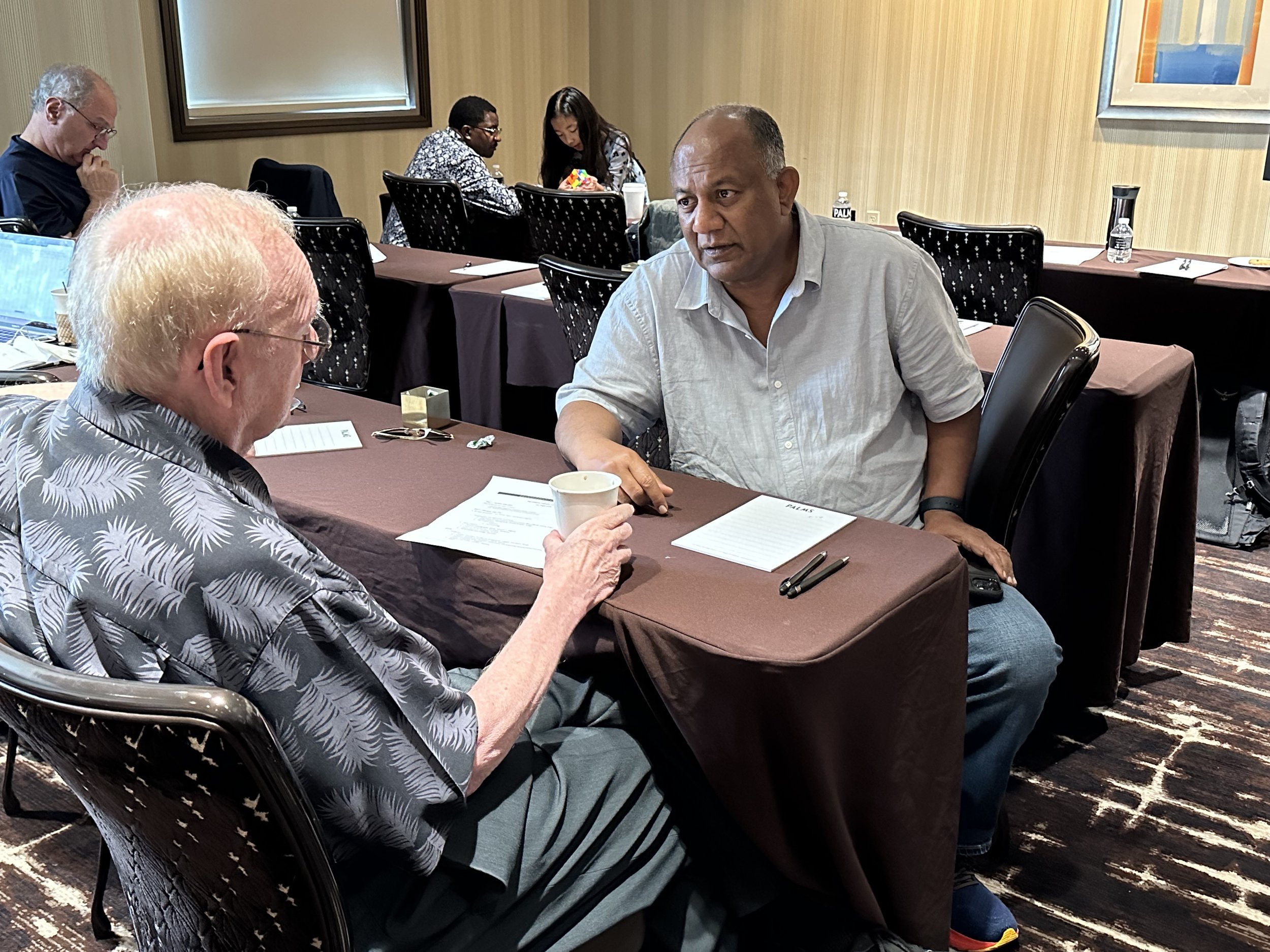


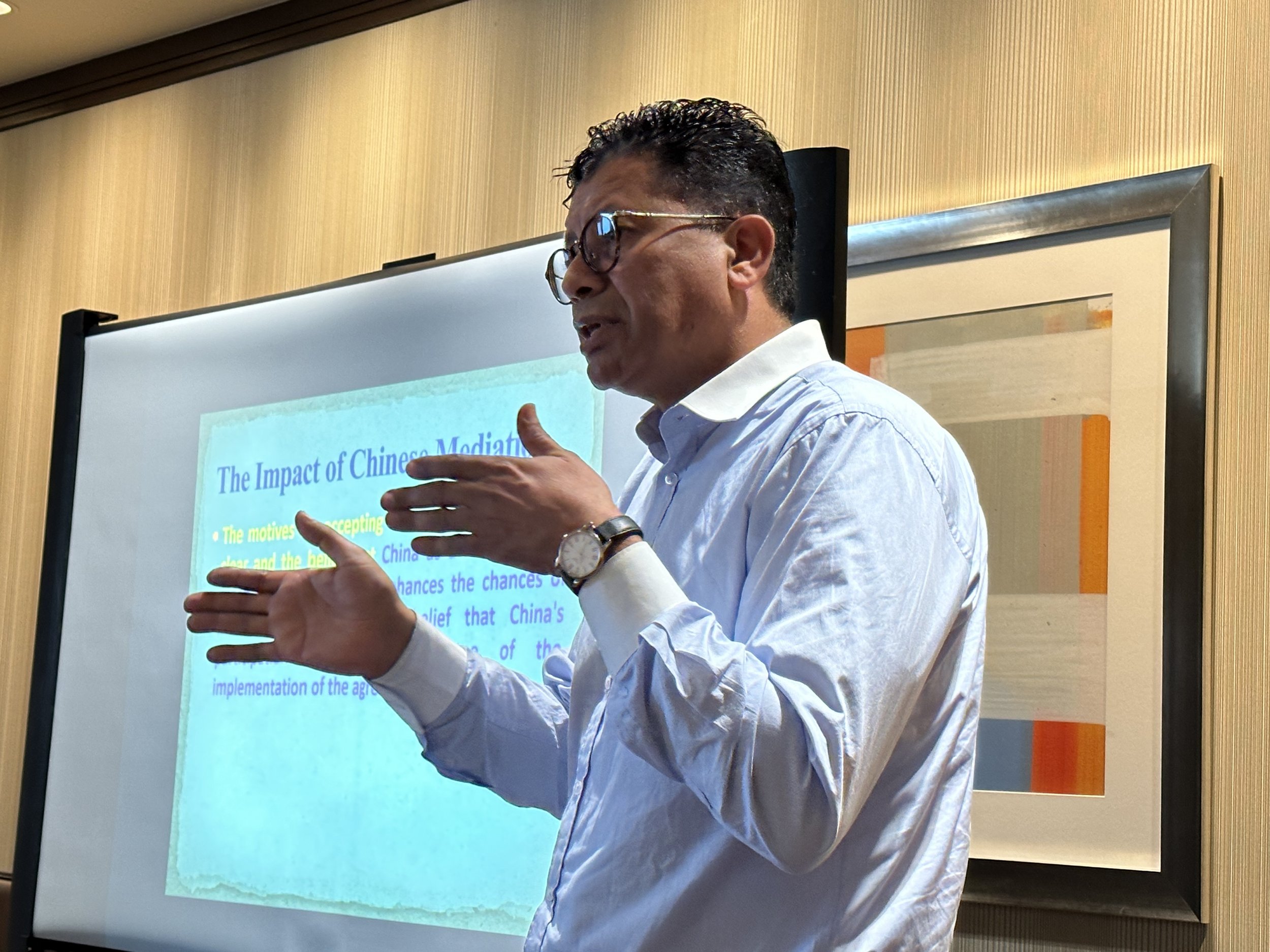

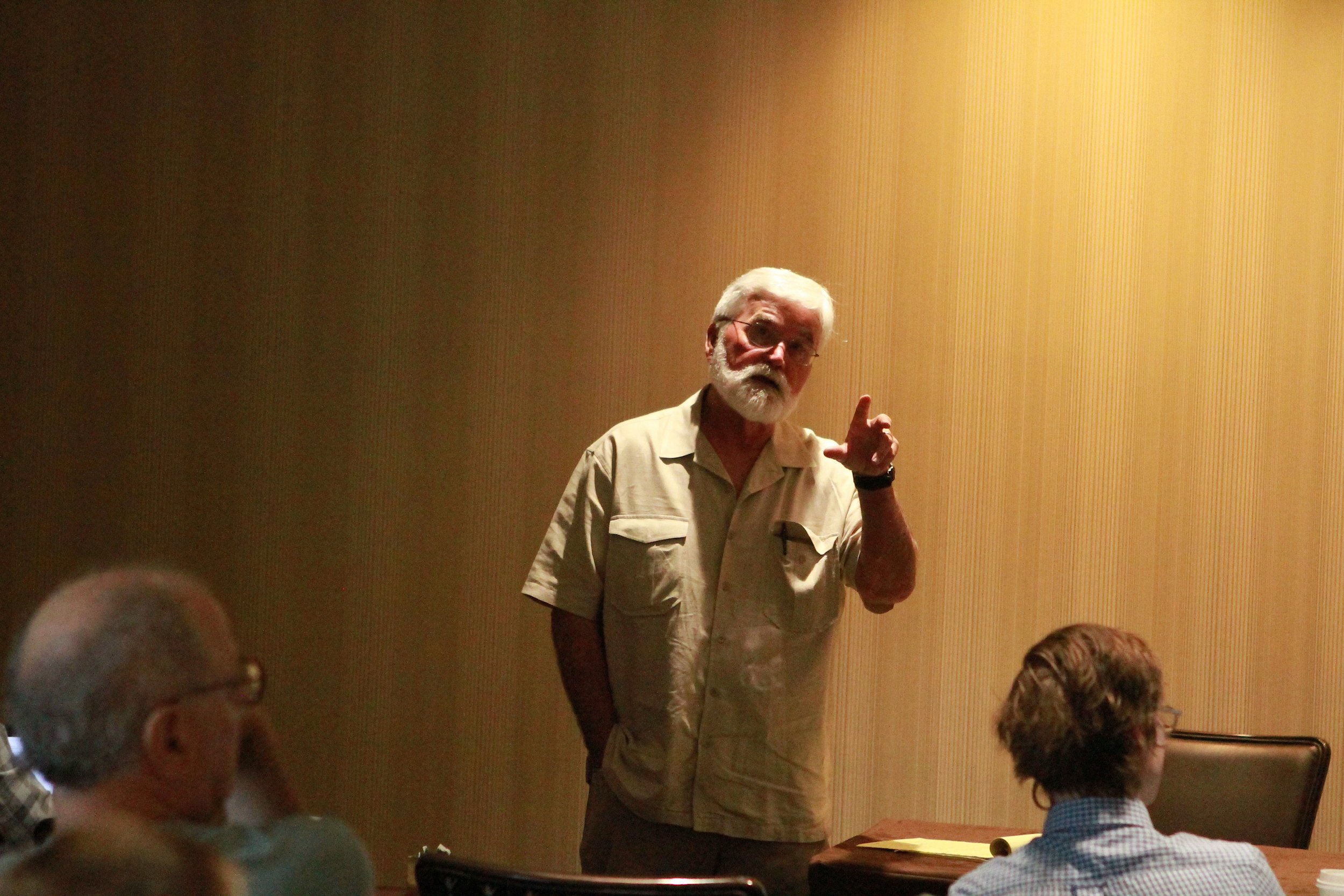
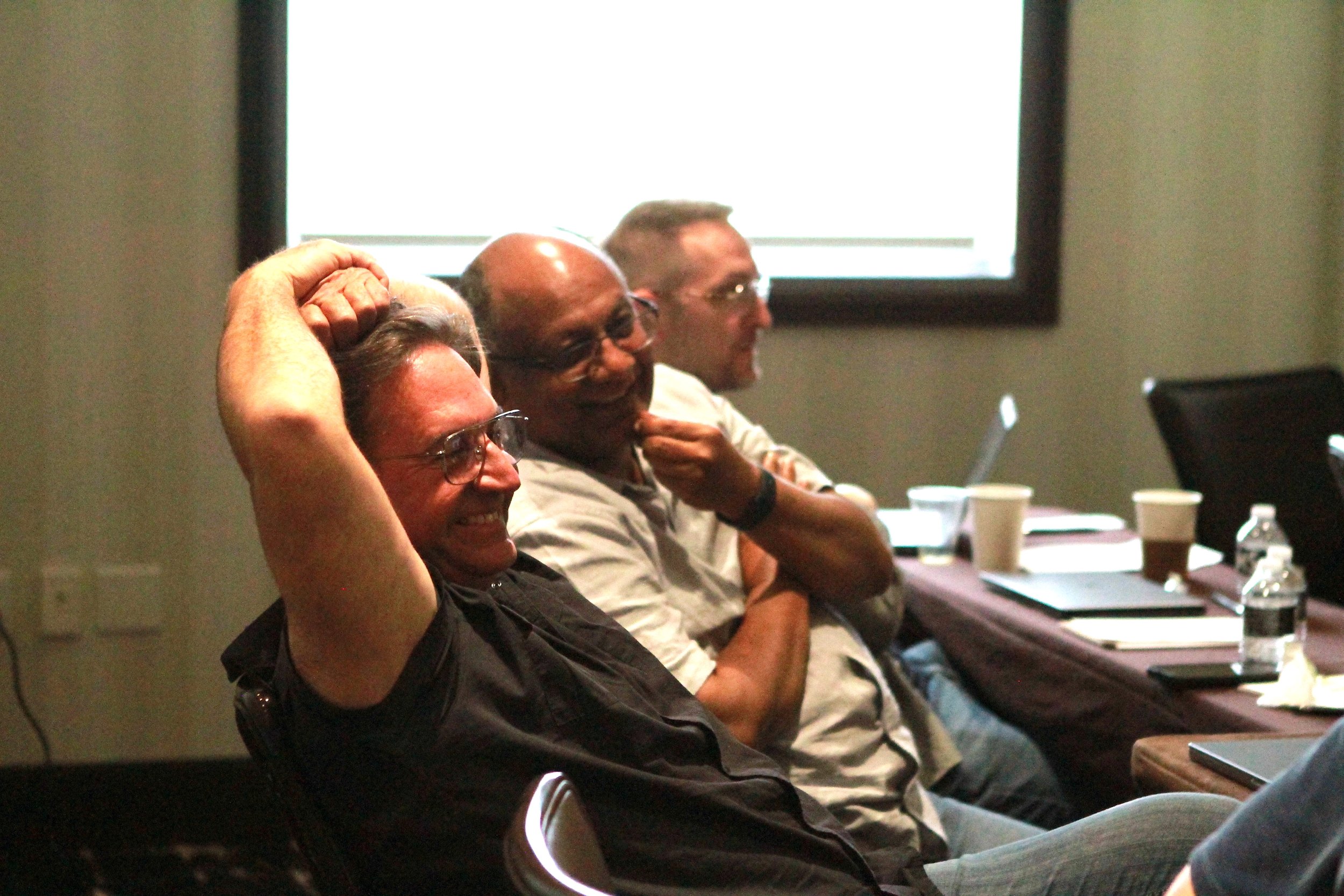
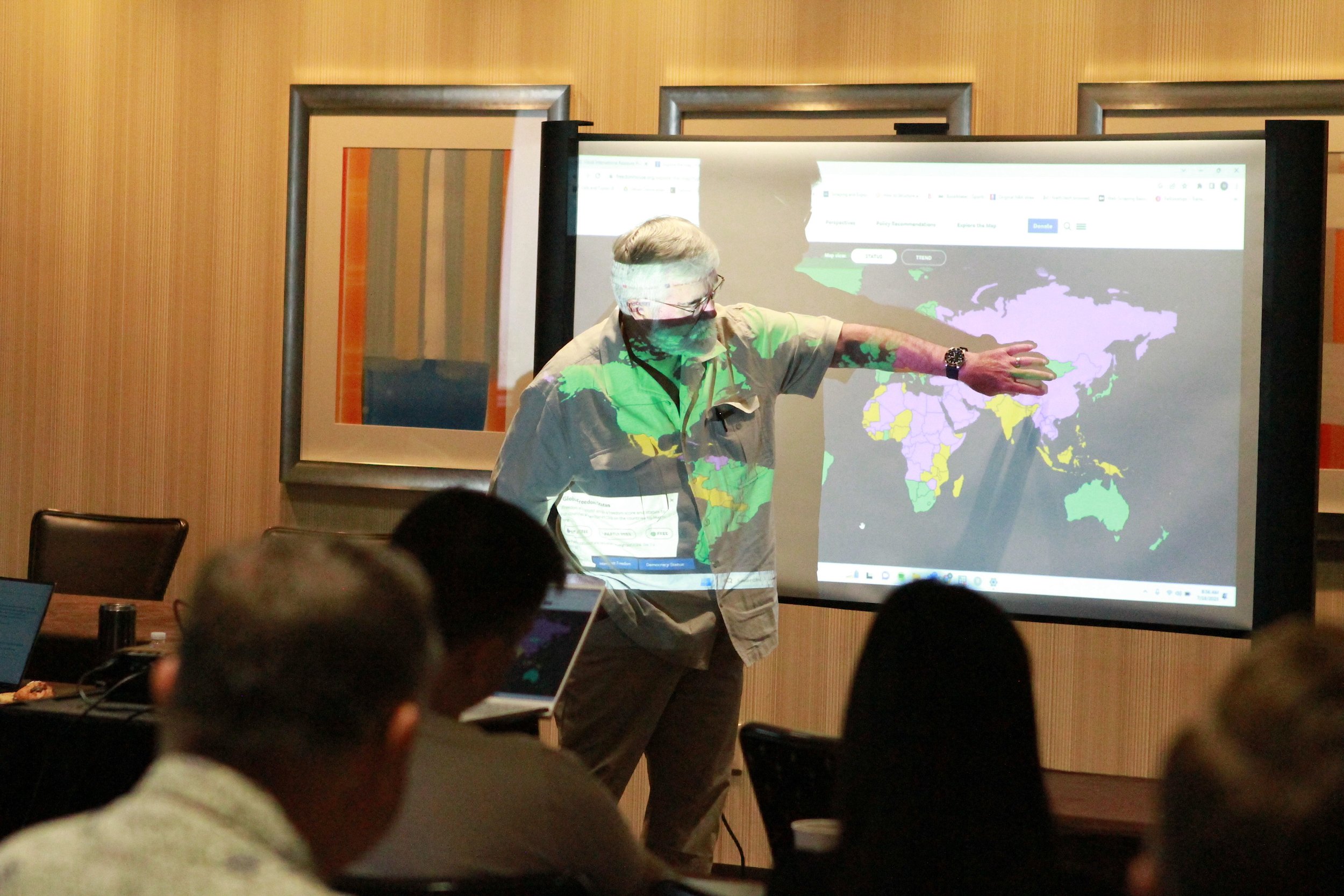
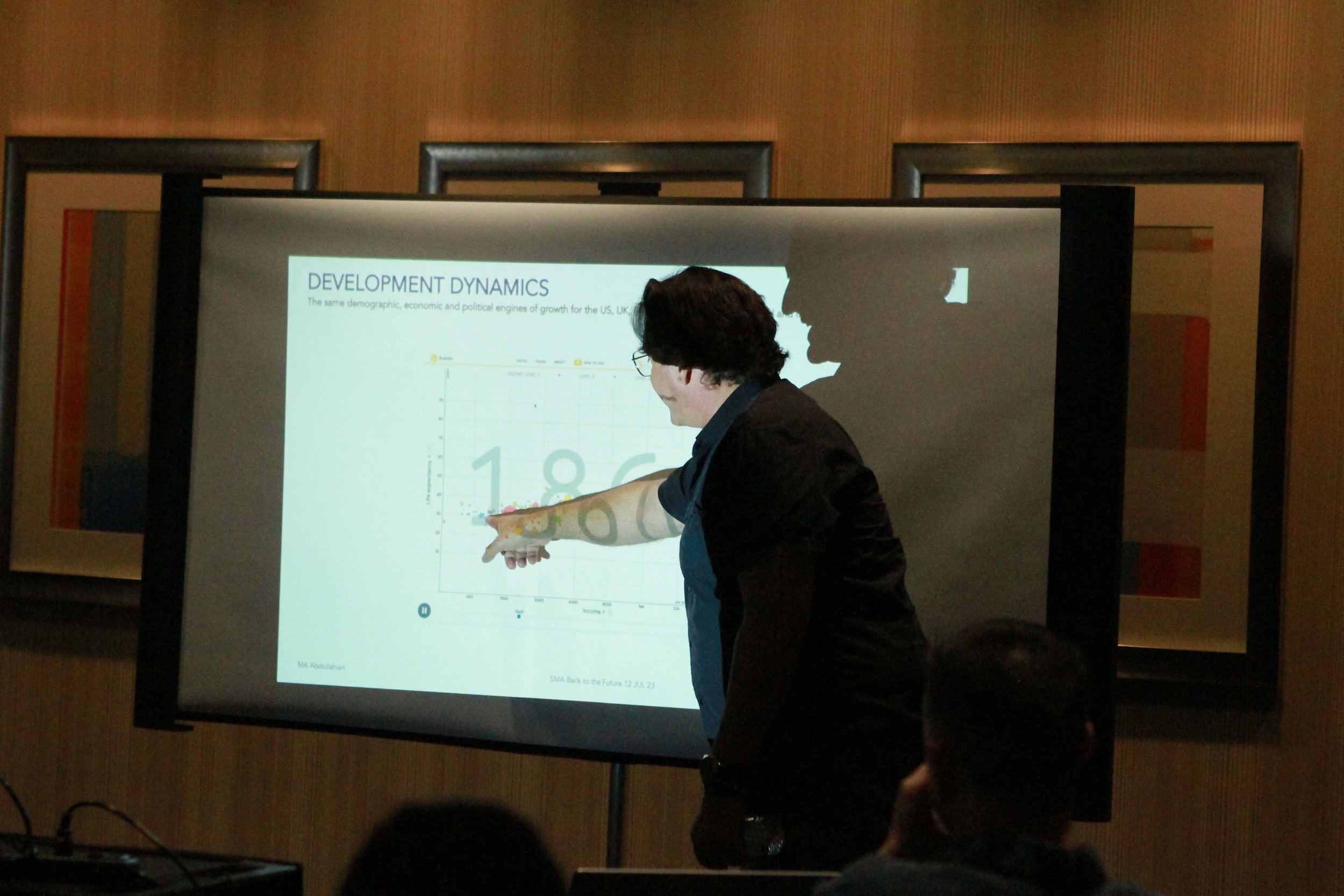
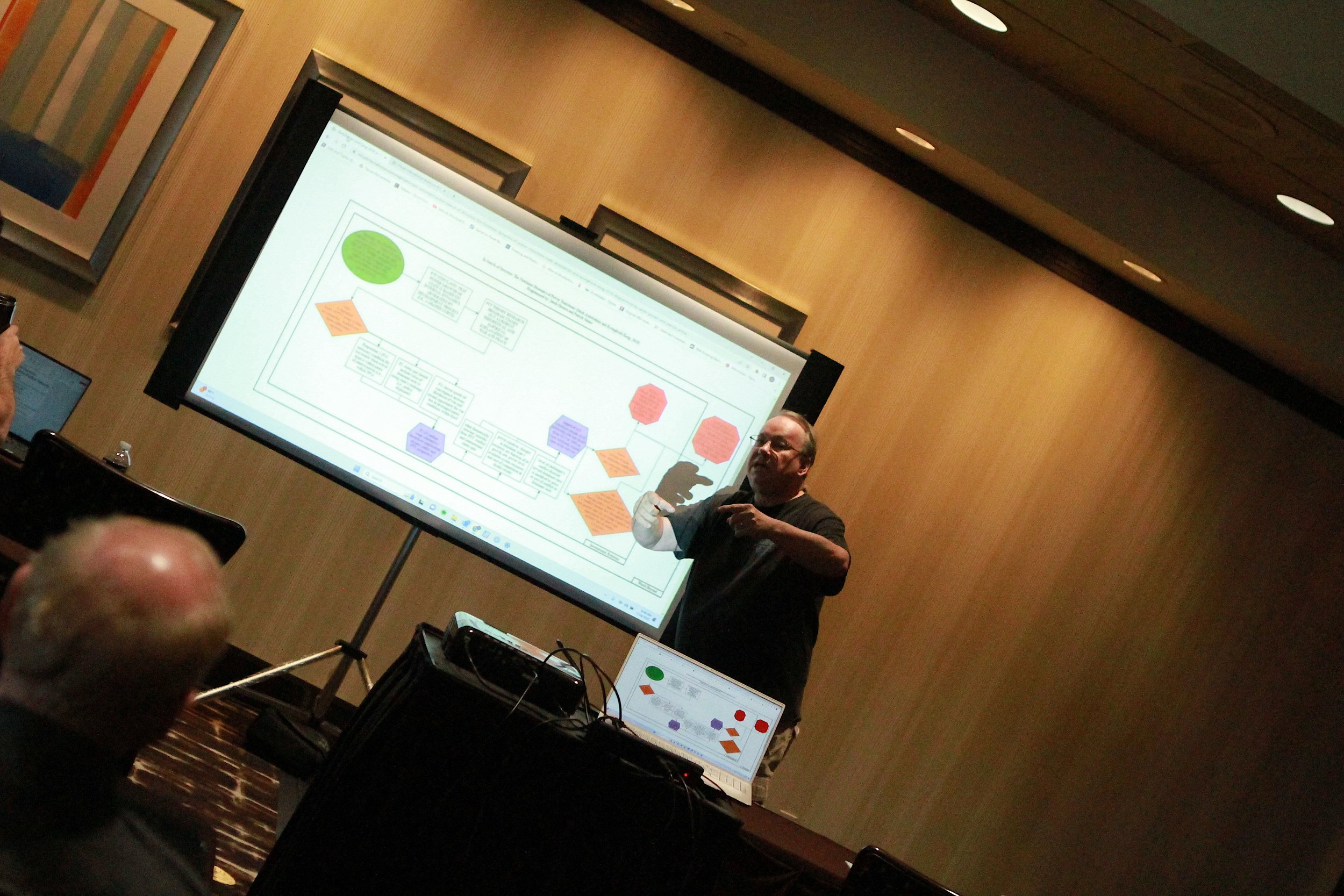

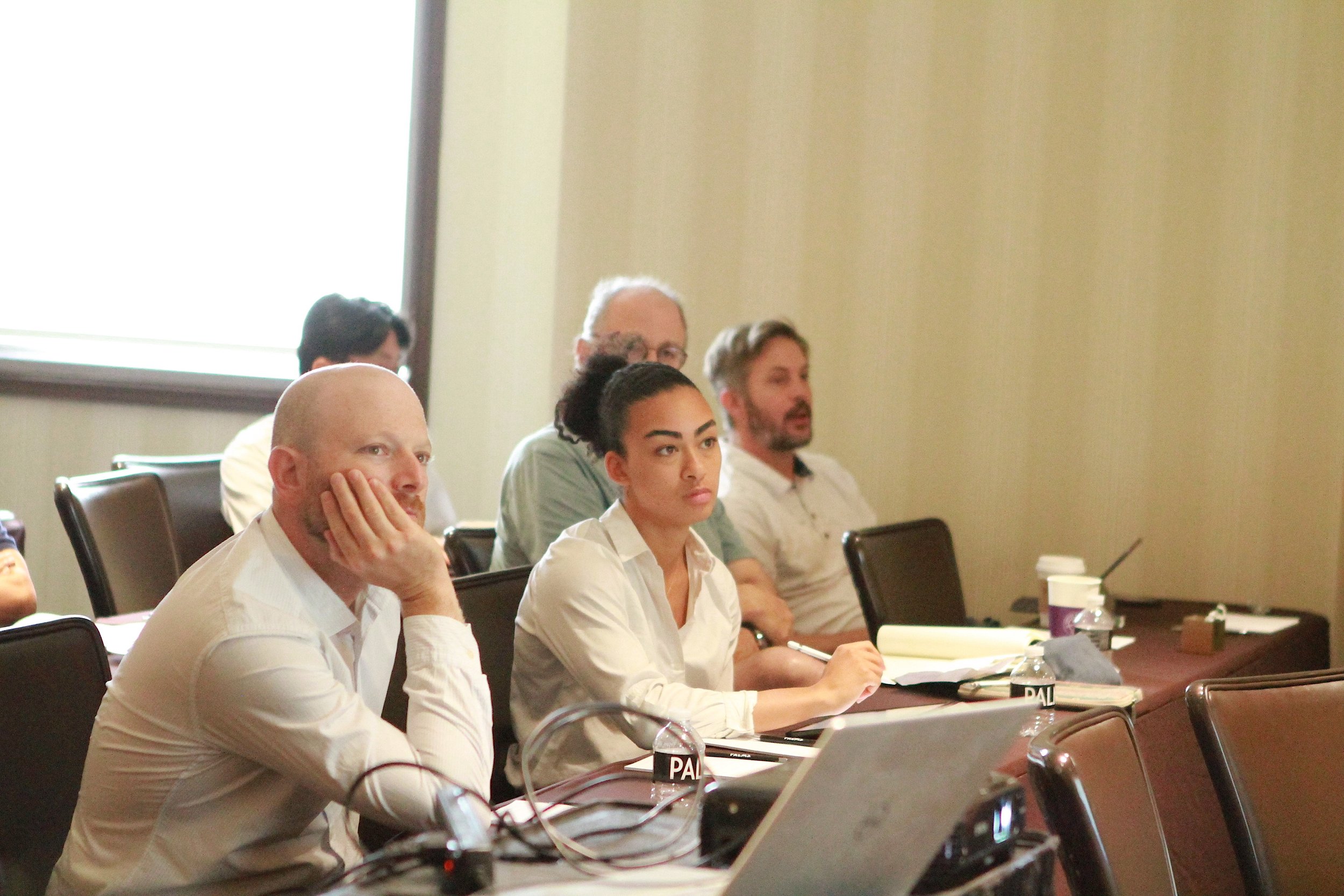

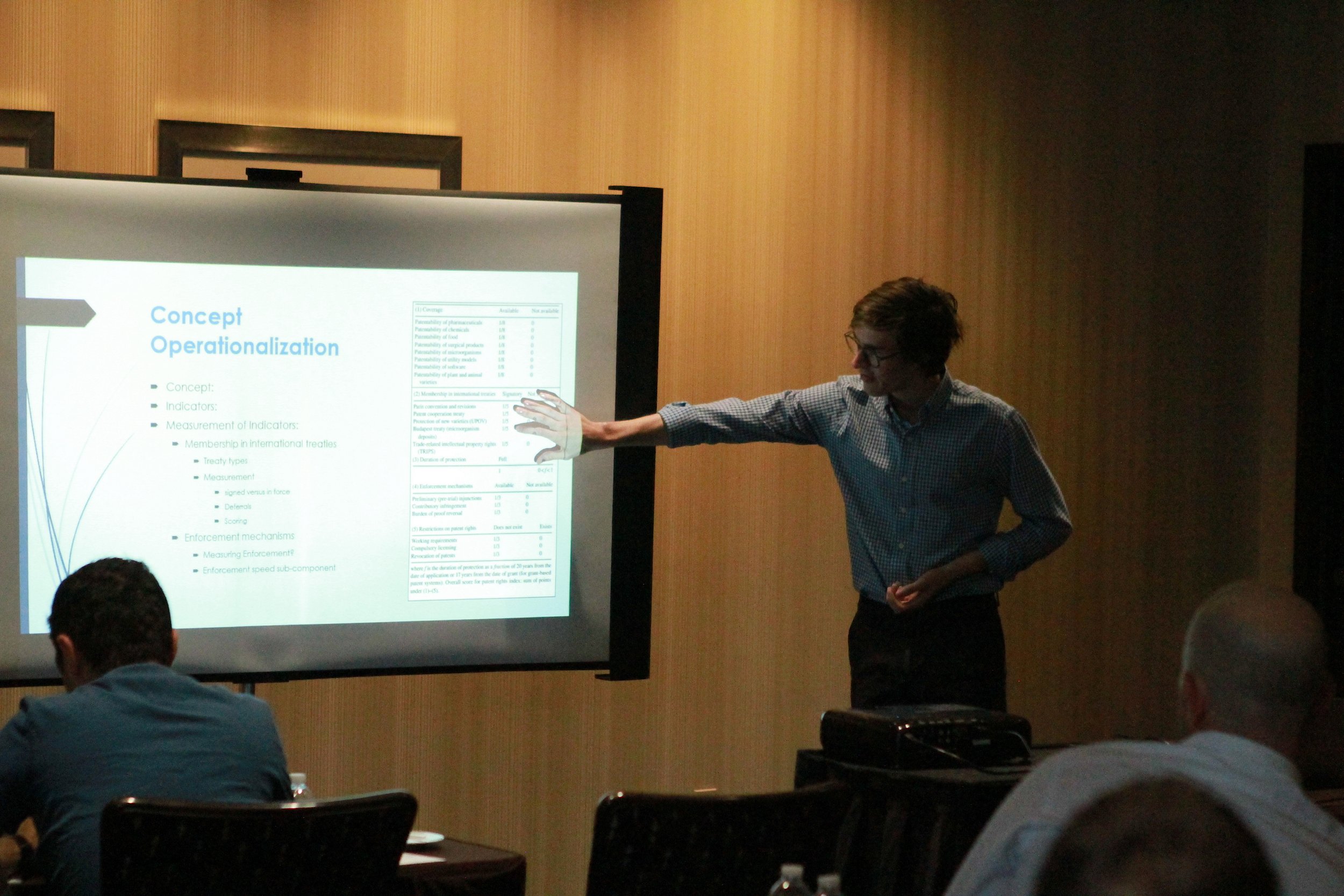

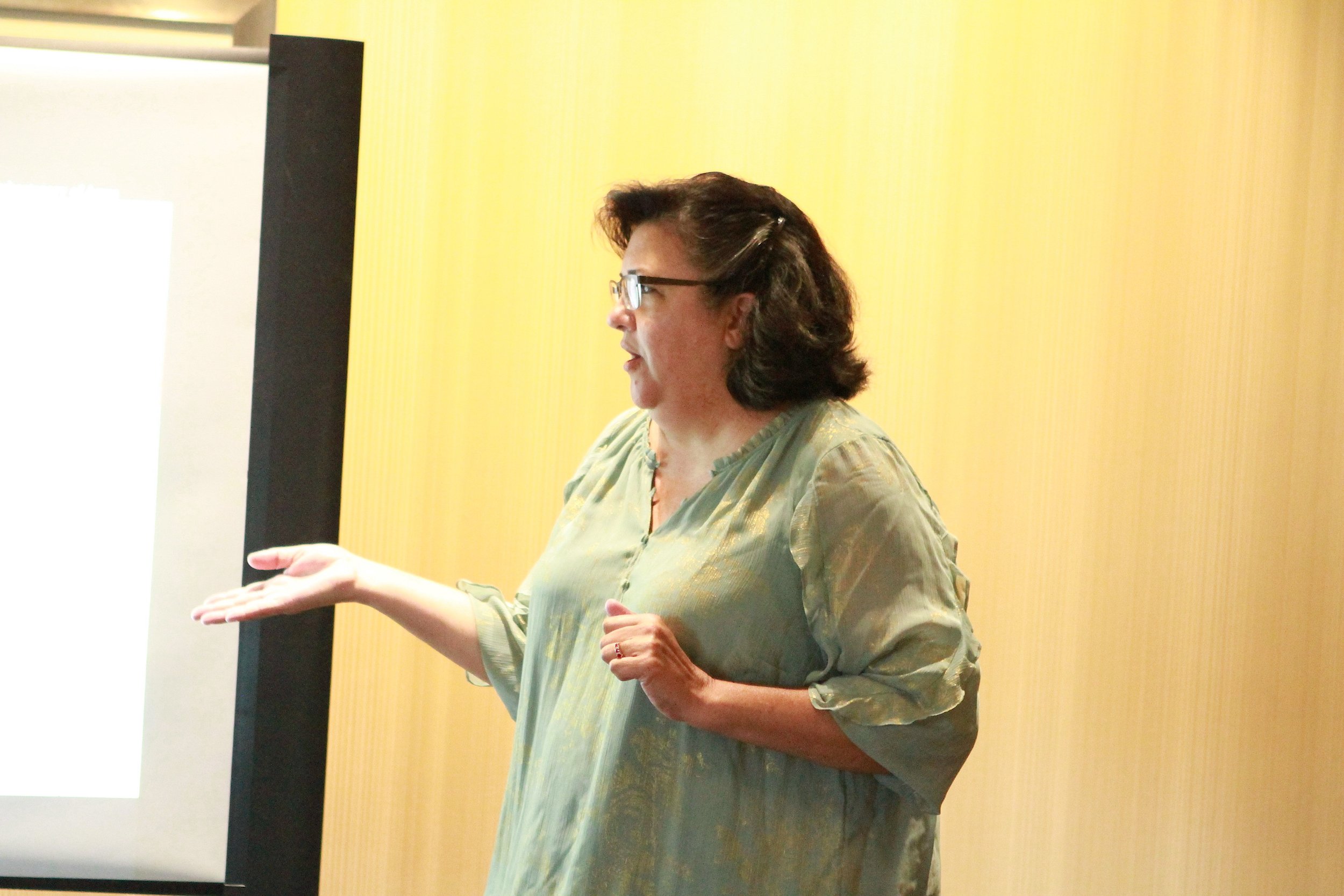


23RD ANNUAL CONFERENCE
August 1 and 2, 2022
Hosted at Claremont Graduate University, California

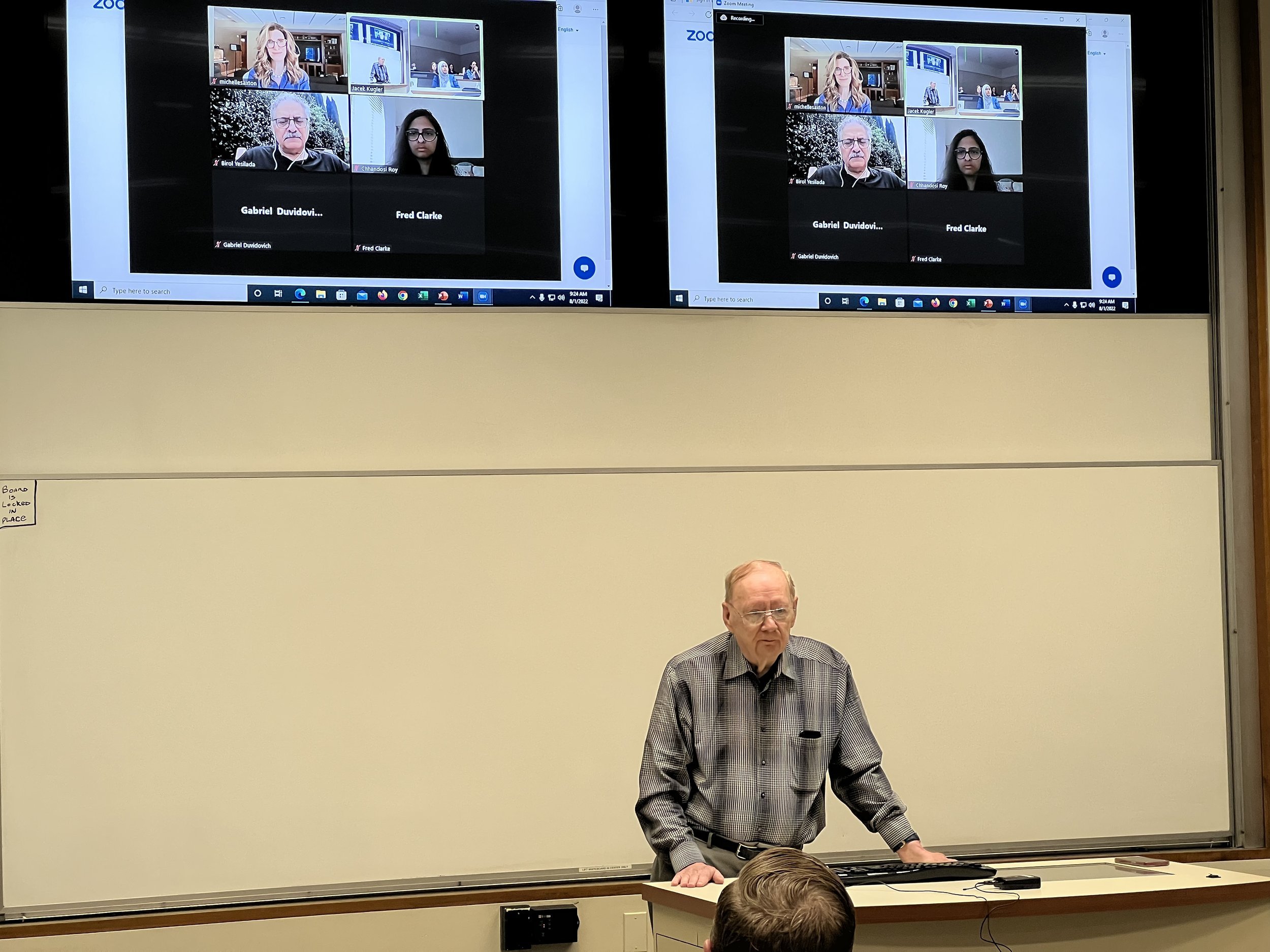
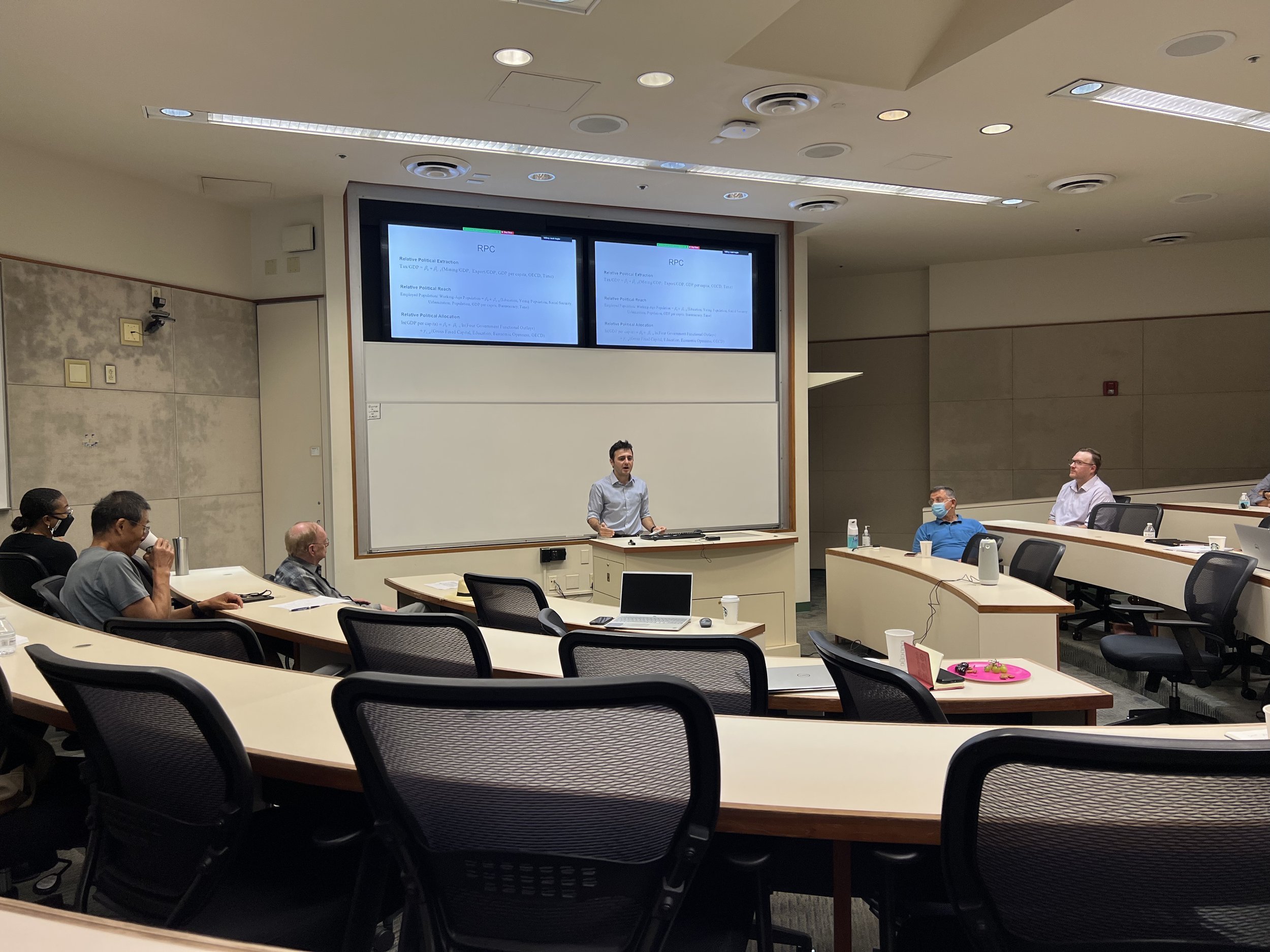
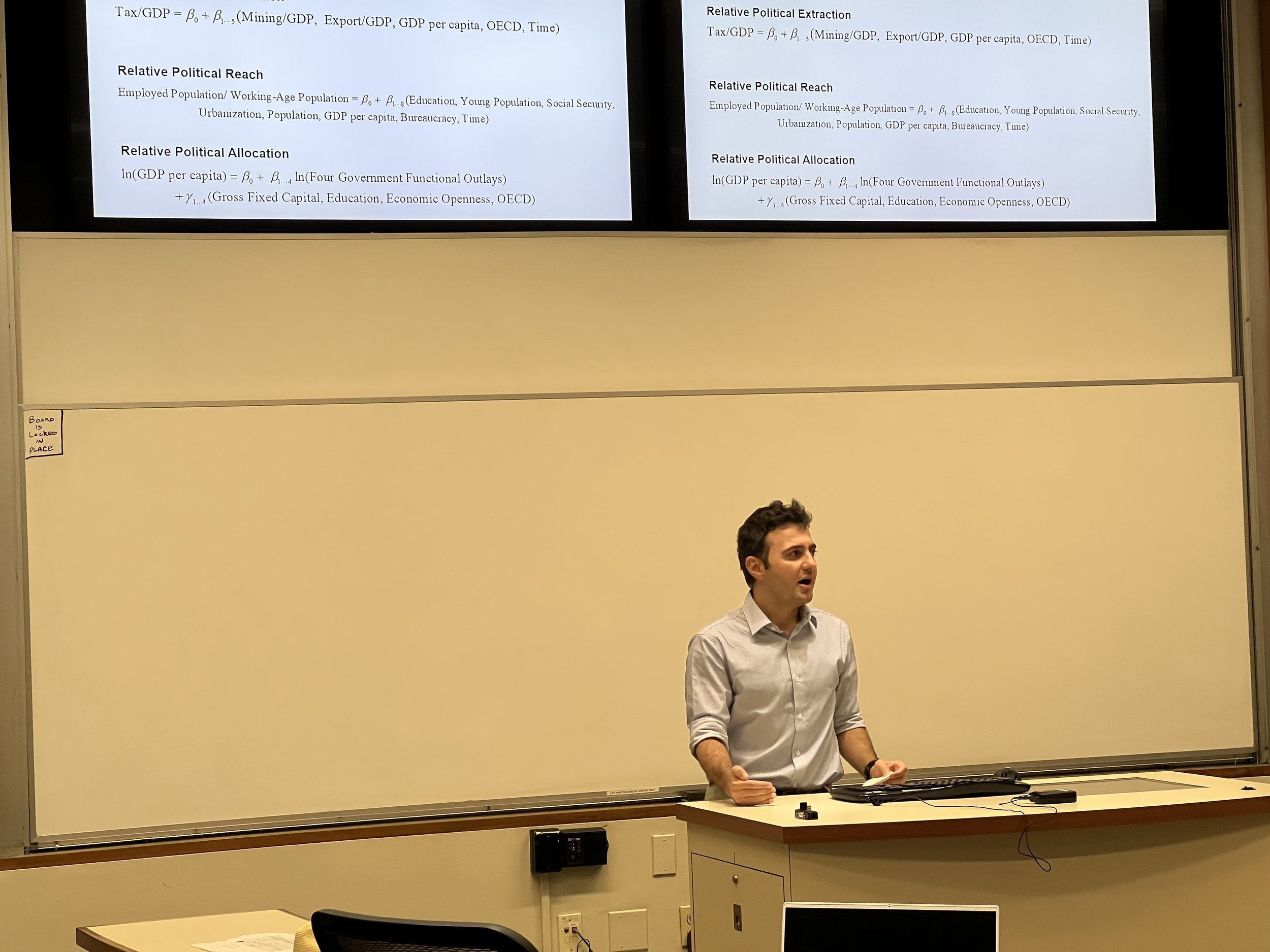
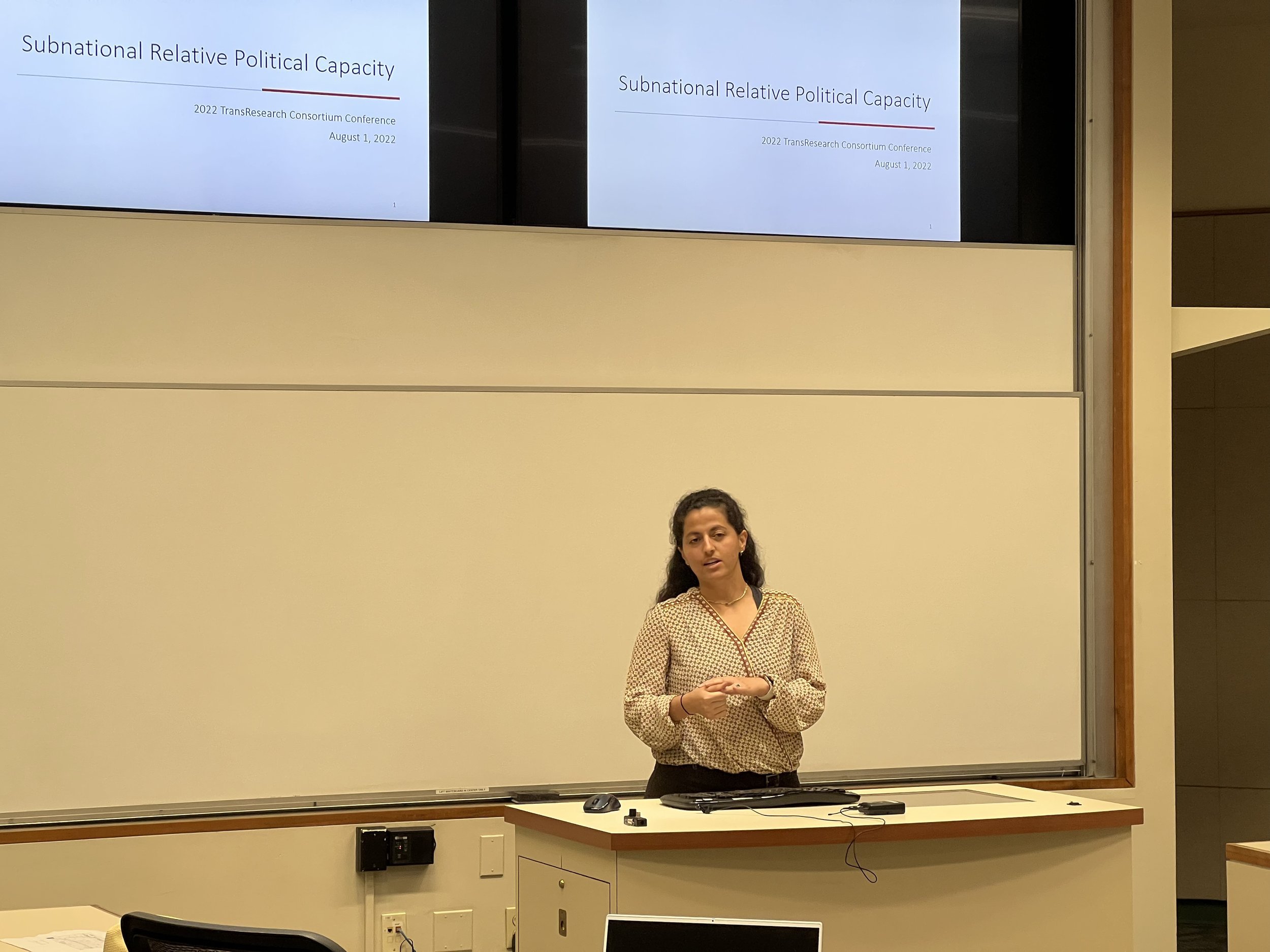
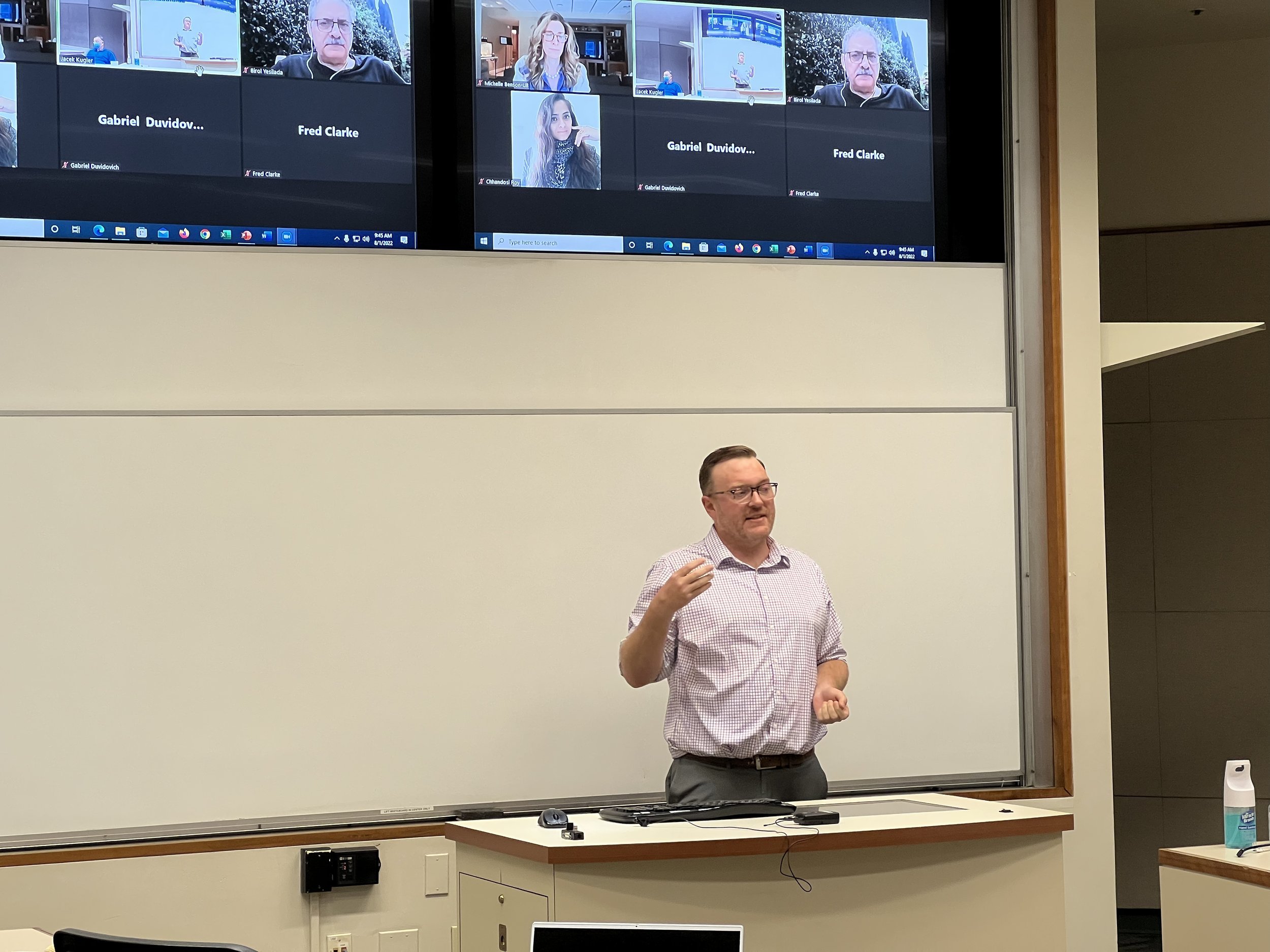






22ND ANNUAL CONFERENCE
August 23 and 24, 2021
Hosted at the Hyatt Regency in Monterey, California
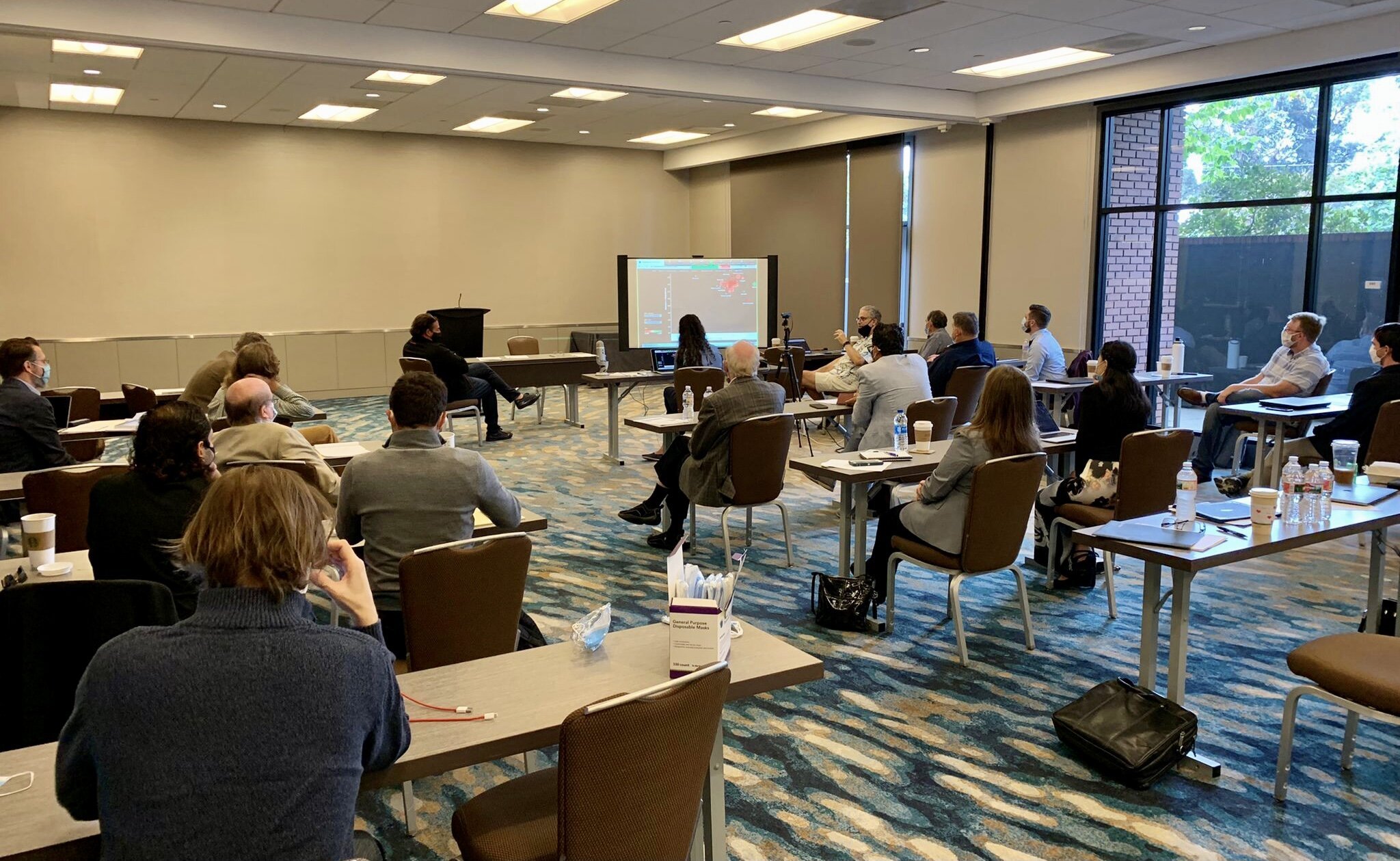


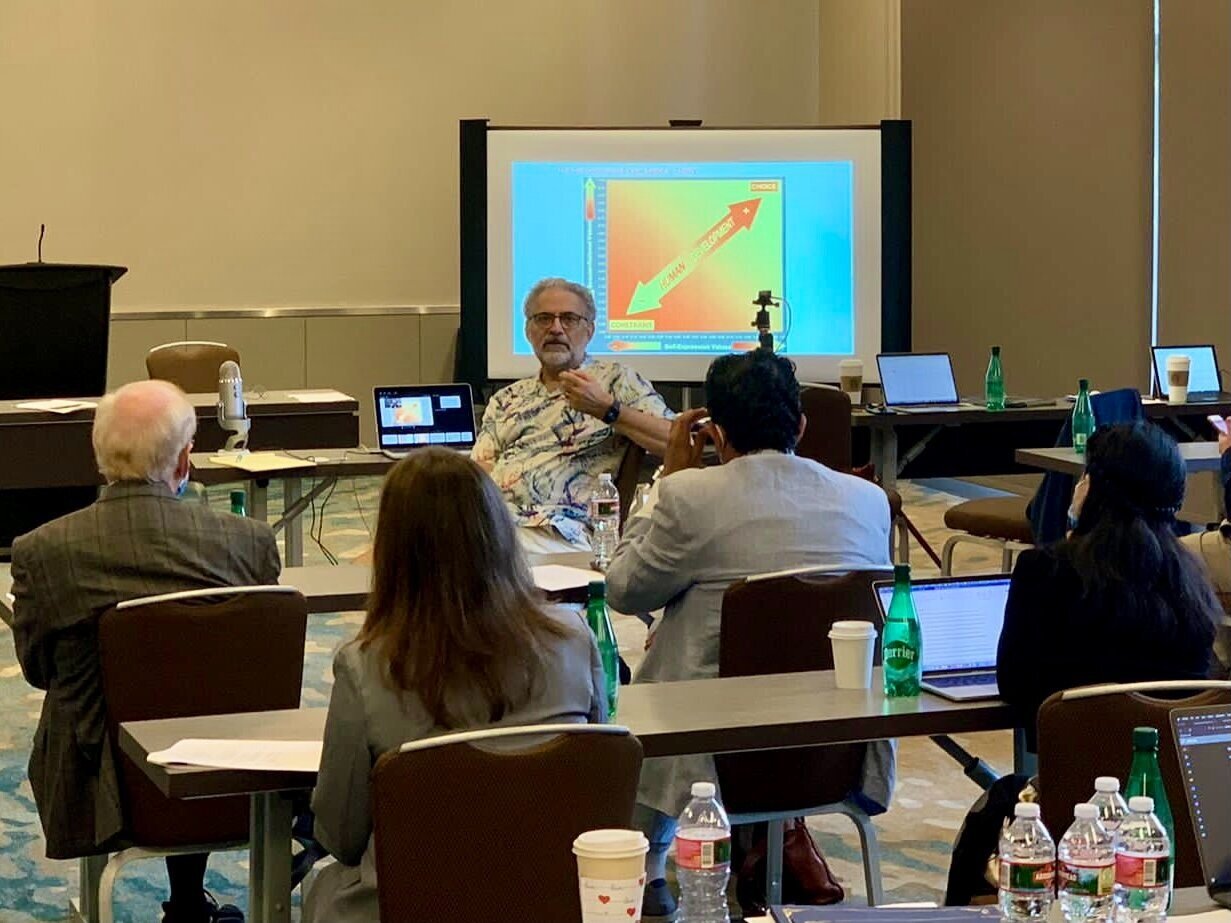











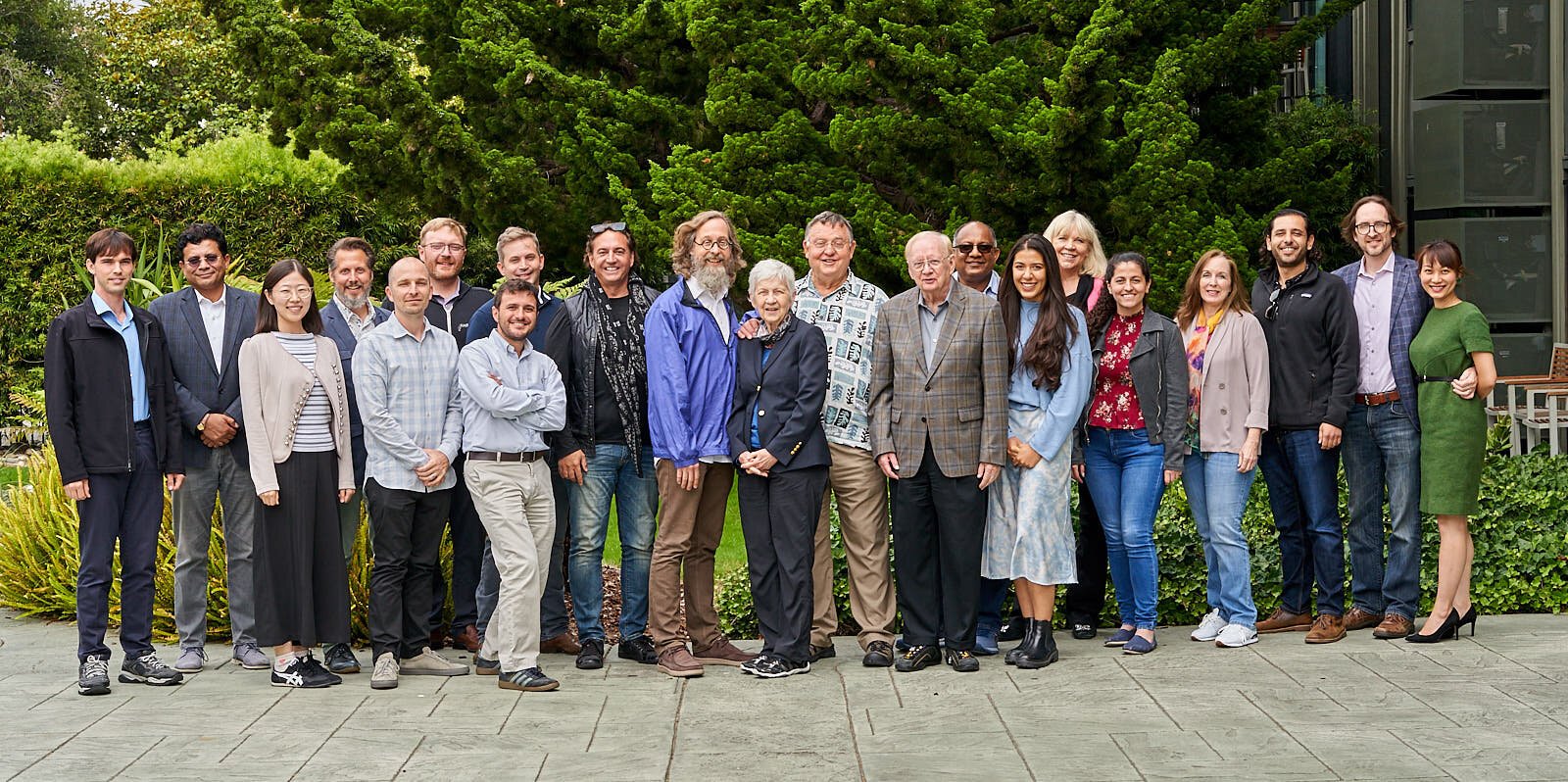
Political performance measures
Relative Political Capacity
Relative Political Capacity (RPC) represents a sign along the road to developing a social science indicator similar to the ubiquitous applications of GDP and GDP per capita in economics. Political science has long valued the universality of these concepts and the powerful applications they allow for measuring and comparative purposes. It was the chase after the elixir of a political science counterpart that led to this volume. Despite its universal appeal, as a concept GDP remains limited in some ways. It does not include the non-monetized economy, the black market, the subsistence economy, or volunteer work, and it fails to address why the public sector is approximated by inputs not outputs. Yet, GDP remains the gold standard for cross national economic comparisons. And GDP per capita is the measure of choice for assessing the average productivity of individuals across and within nations.
RPC takes up the challenge for presenting a GDP-like indicator that would allow scholars and policy makers to compare governmental functions across time, space and across types of governments. Various attempts have been made to develop proxies for government performance but none of them have allowed scholars to measure the effectiveness and efficiency of governments, the performance of governments, vertically and horizontally – from the international to local levels. In order to find our GDP-like political indicator, members of the TRC developed, tested and integrated three distinct measures of political performance. They are Extraction, Reach, and Allocation. Extraction approximates the ability of governments to appropriate portions of the national output to advance public goals. Reach gauges the capacity of governments to mobilize populations under their control. Allocation evaluates the share of public revenues provided to competing national priorities contrasted to the optimal allocation based on maximizing economic growth. Each of these measures is tested empirically to determine if significant and substantive results followed from their applications. These tests establish the universality of the political performance concept.
In the attached files, you can find the aforementioned measures of political performance as well as the components used to calculate them. The codebook, which includes detailed information on calculation procedures and data sources, is also provided. For any questions or concerns about the dataset, please contact Ali Fisunoglu (afisun@gmail.com).
Religious Characteristics of states (RCS)
RCS Dataset Project (RCS-Dem 2.0)
The dataset reports estimates of religious demographics, both country by country and region by region. RCS was created to fulfill the unmet need for a dataset on the religious dimensions of countries of the world, with the state-year as the unit of observation. It covers 220 independent states, 26 selected substate entities, and 41 geographically separated dependencies, for every year from 2015 back to 1900 and often 1800 (more than 42,000 state-years). It estimates populations and percentages of adherents of 100 religious denominations including second level subdivisions within Christianity and Islam, along with several complex categories such as "Western Christianity." RCS is designed for easy merger with datasets of the Correlates of War and Polity projects, datasets by the United Nations, the Religion And State datasets by Jonathan Fox, and the ARDA national profiles. The dataset can be downloaded through the Association of Religion Data Archives website (ARDA). For any questions or concerns about the dataset, please contact Patrick James (patrickj@usc.edu).
Principal Investigators
Dr. Davis Brown, Nonresident Fellow, Baylor University Institute for Studies of Religion
Dr. Patrick James, Dornsife Dean's Professor of International Relations, University of Southern California
Dyadic Annual State Interactions Dataset (DASID)
Dyad-Year Interstate Interactions
This dataset aggregates interstate interactions at the directed dyad-year level of analysis from 1985 to 2019. The raw events data are drawn from the Integrated Data for Events Analysis (IDEA) data set. Dyad-year aggregates capture the number of positive, negative, and ambiguous dyadic interactions each year as well as the sum of their mWEIS/Goldstein scores in terms of both positive and negative interactions. It also isolates the number of state visits from host to target state for each dyad-year. (Year 1985, 1986, and 2018 are incomplete, please use with caution).
For any questions or concerns about the dataset, please contact Nicholas Stowell (nicholas.stowell@cgu.edu). For questions about the raw IDEA data from which this dataset is derived, contact Doug Bond (doug.bond@vranet.com)
Investigators:
Dr. Nicholas Stowell, TransResearch Consortium Fellow Dr. J. Patrick Rhamey Jr., Associate Professor, Department of International Studies and Political Science, Virginia Military Institute Dr. Thomas J. Volgy, Professor of Political Science, School of Government and Public Policy, University of Arizona Dr. Birol Yesilada, Director & Professor, Mark O. Hatfield School of Government, Contemporary Turkish Studies Endowed Chair
DIPLOMATIC CONTACTS DATABASE (DIPCON)
DIPCON database records all embassies sent by all states to other states in the international system between 19603 and 2008 in Version 2.3 and 1970 to 2010 in Version 3.0, generally at five-year intervals (there are some time frames when the intervals are shorter to allow researchers to gauge, especially during periods of substantial change, whether or not diplomatic contacts are shifting quickly).
For more information, please contact Dr. Patrick Rhamey (rhameyjp@vmi.edu) or Dr. Thomas Volgy (volgy@arizona.edu).
NOTE:
There are two versions of the DIPCON Database. Version 2.3 was created March, 2010, and was noted as Version 2.3. It is authored by Patrick Rhamey, Kirssa Cline, Sverre Bodung, Alexis Henshaw, Beau James, Chansuk Kang, Alicia Sedziak, Aakriti Tandon, and Thomas J. Volgy. The second version, noted as DIPCON Database 3.0, was created June 2013, and is a modified version of 2.3: a) 1960 and 1965 are eliminated in the data due to numerous errors detected in the original source; b) several errors in the earlier version have been identified (errors were due to either problems in the original source or due to coding errors) and changed; and c) microstates (states with populations fewer than 200,000) are dropped from the data. This version is authored by Patrick Rhamey, Kirssa Cline, Nicholas Thorne, Jacob Cramer, Jennifer L. Miller, and Thomas J. Volgy (2013). “The Diplomatic Contacts Database,” Tucson: School of Government and Public Policy, University of Arizona (Version 3.0).
REGIONs OF OPPORTUNITY AND WILLINGNESS (rowS)
The Regions of Opportunity and Willingness (ROW) Data provides a means for international relations scholars to incorporate analytically derived geographic spaces comprised of states with unique patterns of interaction into their empirical research. This definition of regions differs from those which use common historical, cultural, or ethnic definitions by focusing upon the actual observed capabilities and political interactions of states. Using an operationalization based upon political behaviors may be more appropriate for much international politics research, while traditional approaches may be more appropriate to others. Regardless, selection of regional definition and identification should be substantively justified at the outset of any analysis.
The dataset helps to identify regional clusters based upon whether a group of proximate states (1) is able to reach one another given their material capabilities and (2) choose to interact in their foreign policy activity. Further explanation is provided in the codebook, including a version history.
For more information, please contact Dr. Patrick Rhamey (rhameyjp@vmi.edu)





















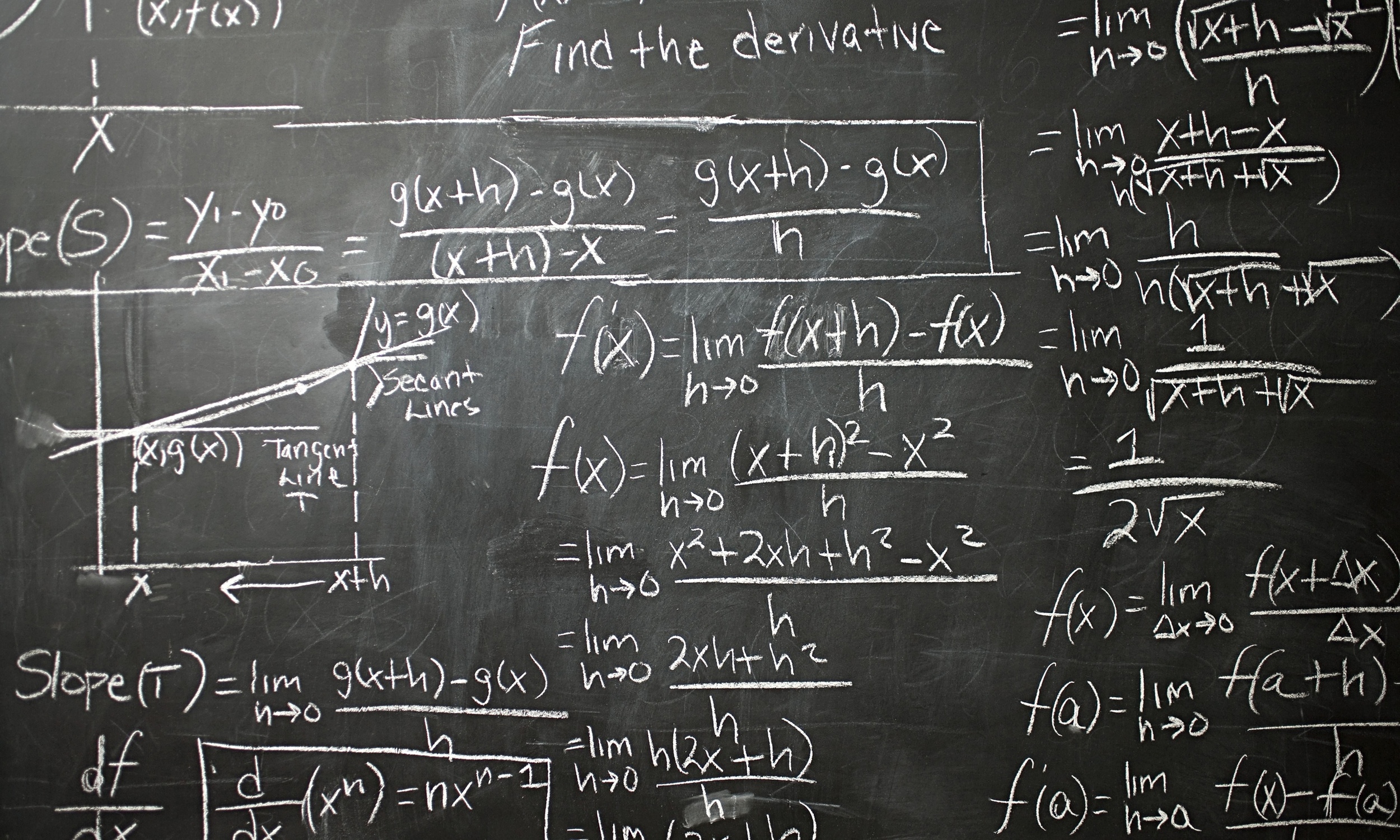










































![Zeyad_Picture[12676823].jpeg](https://images.squarespace-cdn.com/content/v1/576ef1a0be65941edd80fcf7/3d2953a9-826b-41f6-a941-ba20ca09a70a/Zeyad_Picture%5B12676823%5D.jpeg)










































